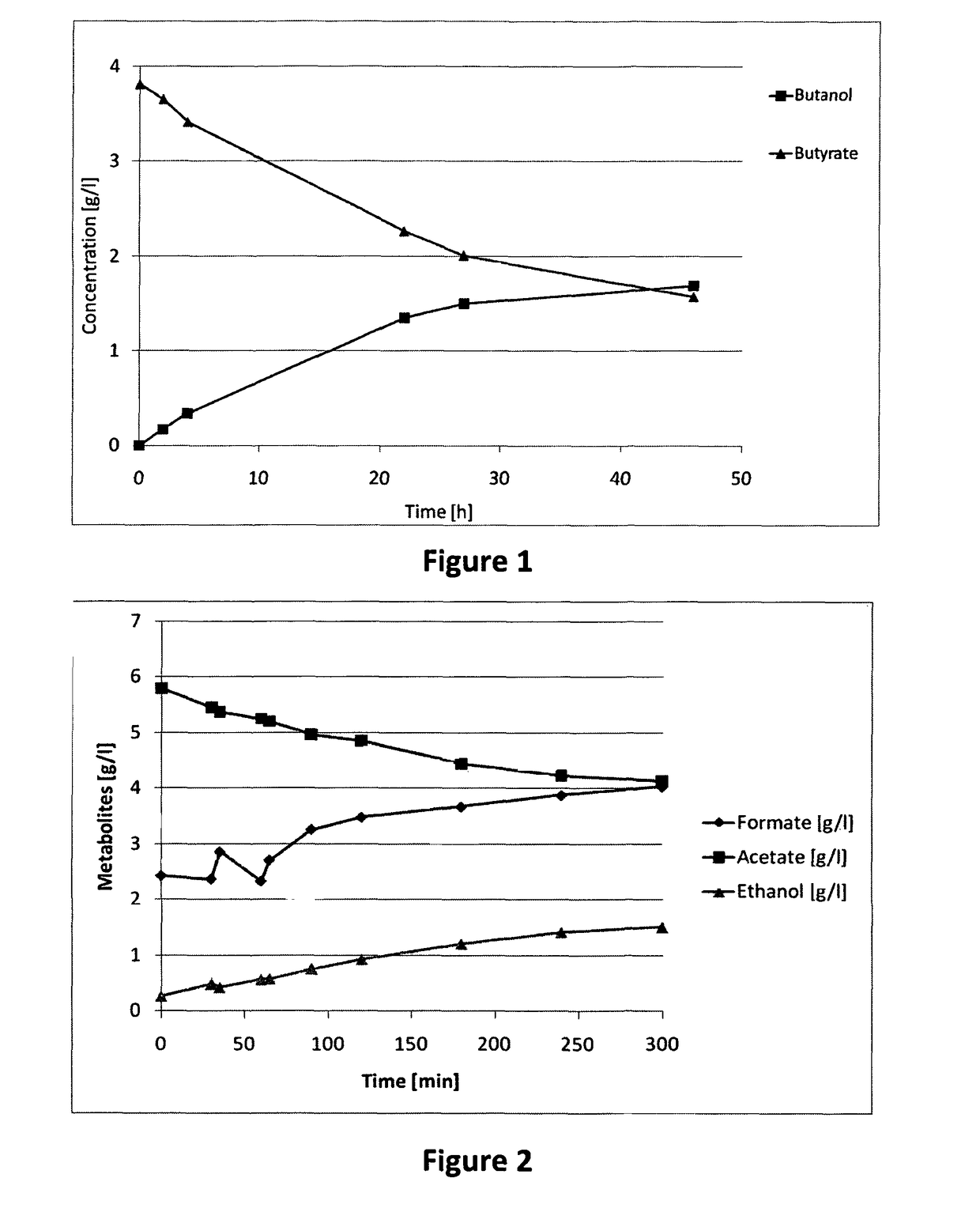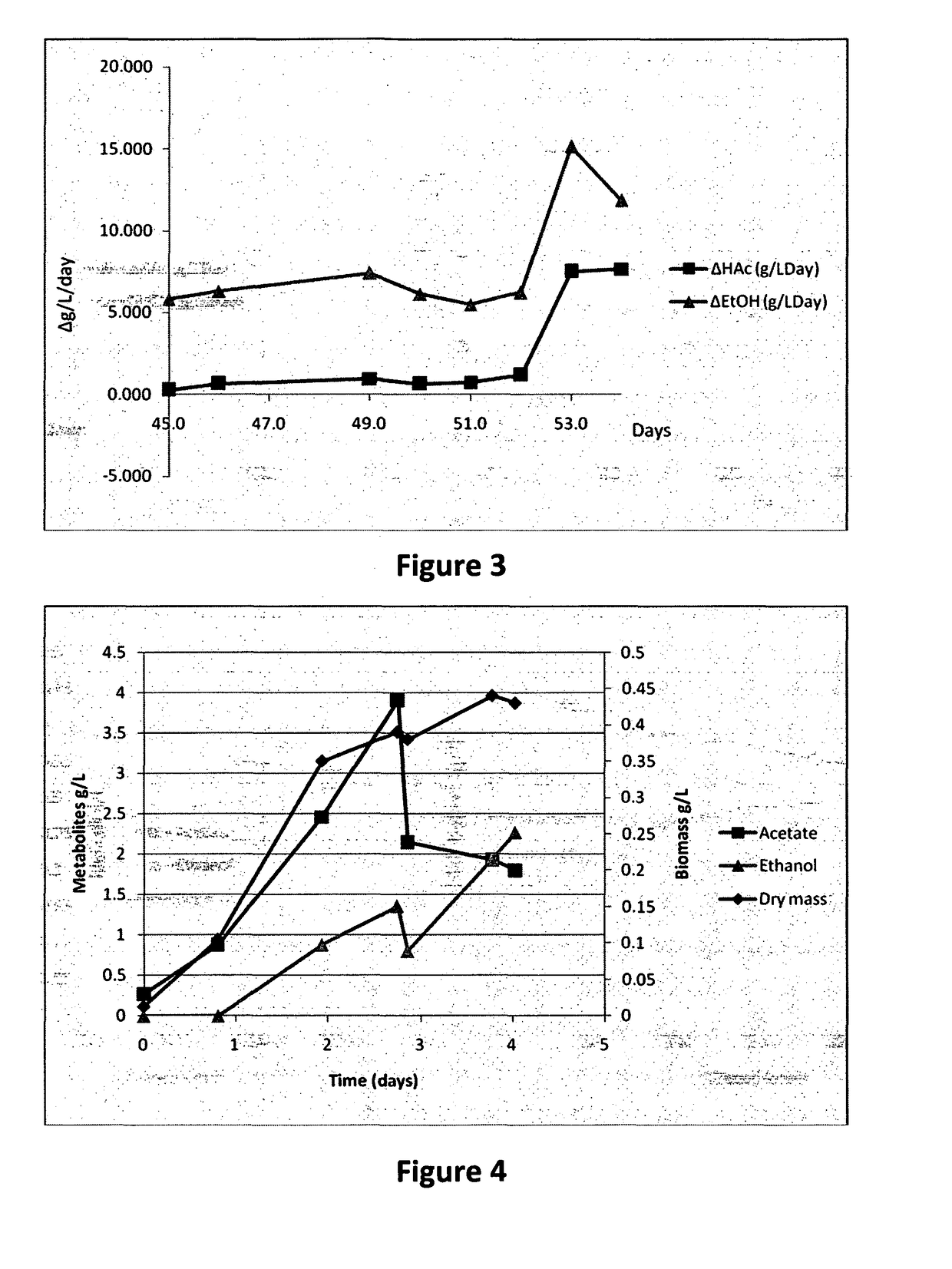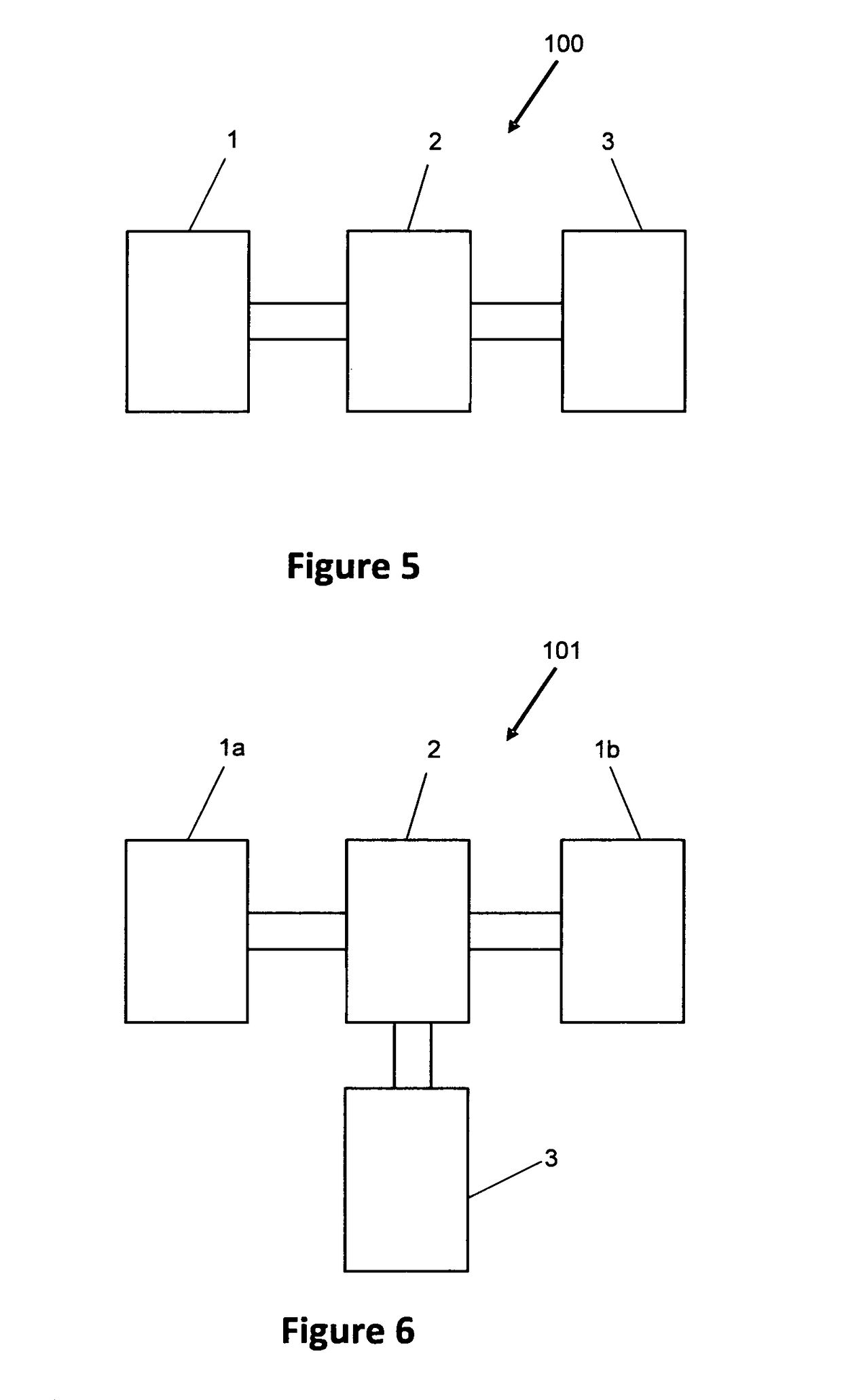Microbial alcohol production process
a technology of microbial fermentation and alcohol, which is applied in the direction of microorganisms, biomass after-treatment, biofuels, etc., can solve the problems of affecting the cost of these carbohydrate feed stocks, the economic sustainability of starch or sucrose-producing crops for butanol production in all geographies, and the efficiency of ethanol production using such fermentation processes may be less than desirabl
- Summary
- Abstract
- Description
- Claims
- Application Information
AI Technical Summary
Benefits of technology
Problems solved by technology
Method used
Image
Examples
example 1
Conversion of Organic Acid to Corresponding Alcohol
example 1a
Conversion of Butyric Acid to Butanol in a CSTR
[0257]An eight-liter reactor was filled with 7200 ml of the media LM23 and autoclaved for 30 minutes at 121° C. While cooling down, the media was sparged with N2. The gas was switched to 95% CO, 5% CO2 prior inoculation with 160 ml of a Clostridium autoethanogenum culture. The bioreactor was maintained at 37° C. stirred at 200 rpm at the start of the culture. During the growth phase, the agitation was increased to 500 rpm. The pH was set to 5.5 and maintained by automatic addition of 5 M NaOH. The n-butyrate solution containing 20 g butyric acid buffered to pH 5.5 was added directly into the actively growing culture. Samples of the fermentation broth were taken at 0, 24 and 48 hours after butyric acid addition (see Table 1).
[0258]
TABLE 1Conversion of 20 g of n-Butyrate into 1-Butanol by an8 litre culture of C. autoethanogenum producing acetateand ethanol in a bioreactor maintained at pH 5.5.Time [h]02448Butanol produced [g]0.04.08.2Star...
example 18
Conversion of Acetate and Butyrate to Corresponding Alcohols
[0259]Serum vials were prepared in accordance with the above. Once microbial growth was established (associated with acetate and small amounts of ethanol produced), the following compounds were added into the 50 ml active culture in the serum bottle: 1 ml of Sodium Dithionite 10 g / l solution, 2 ml of n-butyric acid solution 100 g / l (pH adjusted to 5.5 with Sodium Hydroxide 5 M). The gas phase was exchanged for 25 psig overpressure of a mixture of 95% CO, 5% CO2 gas. After addition of the acid, 1 ml sample was taken for quantification of the metabolites at various time points (see Table 2).
[0260]
TABLE 2Conversion of n-butyrate into 1-Butanol by a cultureof C. autoethanogenum producing acetate andethanol in a serum bottle at pH 5.5 in presenceor absence of 0.8 mM methylviologen (MV).Methyl-TimeviologenAcetateEthanolButyrateButanol(h)conc (mM)conc (g / L)conc (g / L)conc (g / L)conc (g / L)004.501.264.190.00205.001.403.930.16404.191.2...
PUM
| Property | Measurement | Unit |
|---|---|---|
| partial pressure | aaaaa | aaaaa |
| CO partial pressure | aaaaa | aaaaa |
| partial pressure | aaaaa | aaaaa |
Abstract
Description
Claims
Application Information
 Login to View More
Login to View More - R&D
- Intellectual Property
- Life Sciences
- Materials
- Tech Scout
- Unparalleled Data Quality
- Higher Quality Content
- 60% Fewer Hallucinations
Browse by: Latest US Patents, China's latest patents, Technical Efficacy Thesaurus, Application Domain, Technology Topic, Popular Technical Reports.
© 2025 PatSnap. All rights reserved.Legal|Privacy policy|Modern Slavery Act Transparency Statement|Sitemap|About US| Contact US: help@patsnap.com



